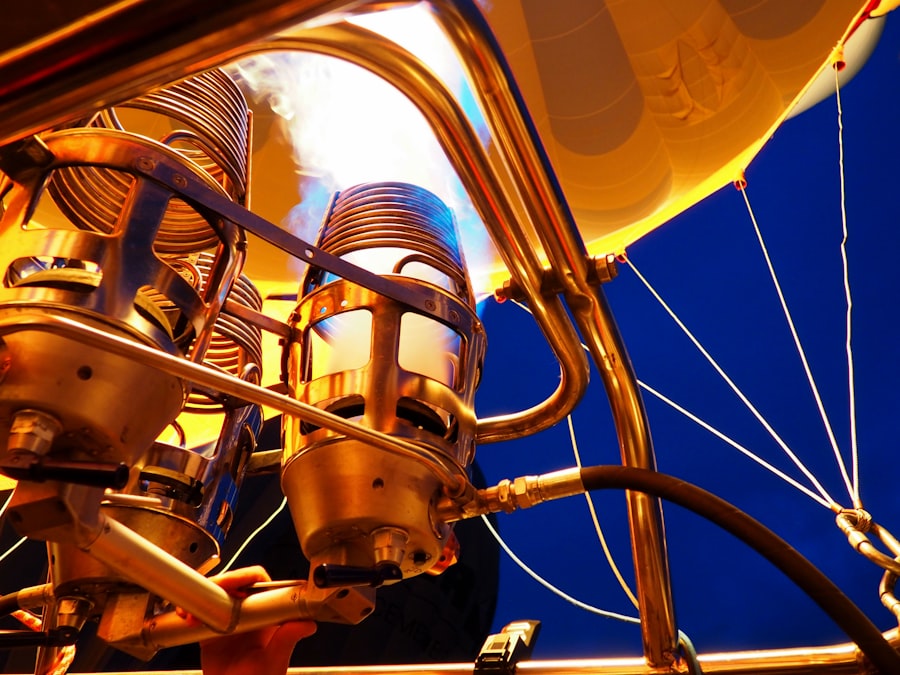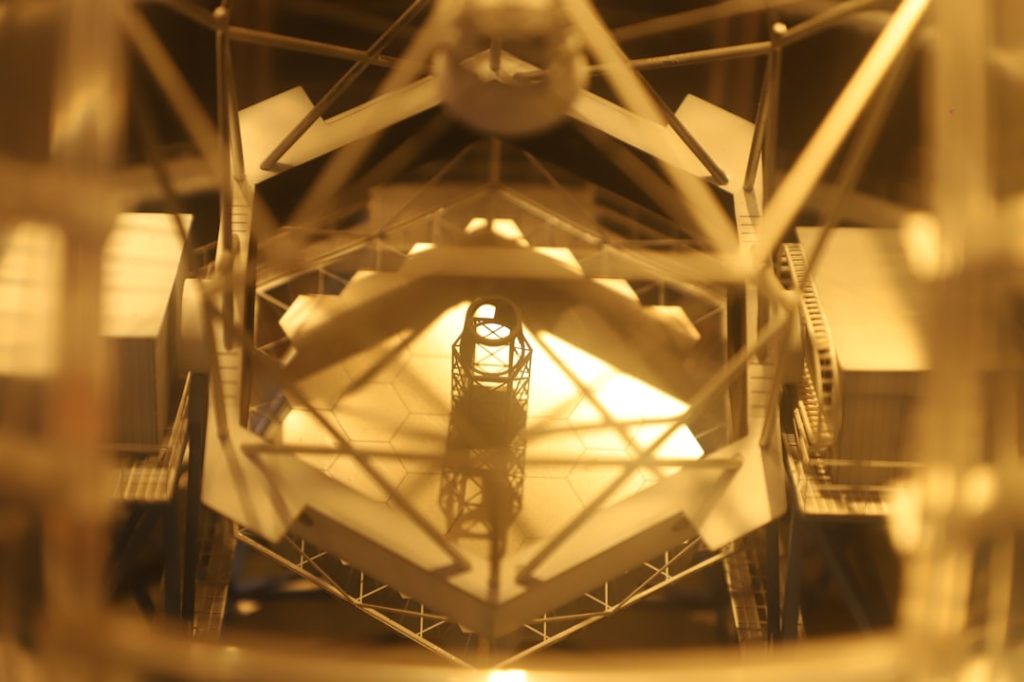Spacecraft engineering is a multidisciplinary field that encompasses the design, development, and operation of vehicles intended for travel or operation in outer space. This domain integrates principles from various engineering disciplines, including mechanical, electrical, aerospace, and computer engineering, to create systems capable of withstanding the harsh conditions of space. The significance of spacecraft engineering extends beyond mere exploration; it plays a crucial role in satellite communications, Earth observation, and scientific research, contributing to our understanding of the universe and enhancing life on Earth.
The complexity of spacecraft engineering is underscored by the myriad challenges engineers face. These include the need to develop systems that can operate in extreme temperatures, vacuum conditions, and high-radiation environments. Additionally, the weight constraints imposed by launch vehicles necessitate innovative design solutions that maximize functionality while minimizing mass.
As humanity’s ambitions in space continue to grow, from manned missions to Mars to the establishment of lunar bases, the importance of advanced spacecraft engineering becomes increasingly evident.
Key Takeaways
- Spacecraft engineering involves the design, development, and operation of spacecraft for various purposes such as exploration, communication, and scientific research.
- The evolution of spacecraft design and technology has seen significant advancements in propulsion systems, materials and structures, navigation and guidance systems, automation and robotics, and environmental control and life support systems.
- Propulsion systems in spacecraft engineering have evolved from chemical rockets to advanced technologies such as ion propulsion and solar sails, enabling longer missions and deeper space exploration.
- Materials and structures in spacecraft engineering have advanced to include lightweight and durable materials, as well as innovative designs to withstand the harsh conditions of space.
- Advancements in navigation and guidance systems have improved spacecraft precision and autonomy, enabling more accurate and efficient space missions.
Evolution of Spacecraft Design and Technology
The evolution of spacecraft design and technology can be traced back to the early days of rocketry in the mid-20th century. The launch of Sputnik 1 by the Soviet Union in 1957 marked a pivotal moment in space exploration, demonstrating the feasibility of sending artificial satellites into orbit. This event catalyzed a global race for space supremacy, leading to rapid advancements in spacecraft technology.
Early spacecraft were rudimentary, often consisting of simple metal shells equipped with basic telemetry systems. However, as missions became more ambitious, so too did the complexity of spacecraft design. The Apollo program exemplified this evolution, showcasing significant advancements in spacecraft technology.
The Apollo Lunar Module, for instance, was a marvel of engineering that required intricate systems for navigation, propulsion, and life support. The introduction of computer systems for guidance and control marked a significant leap forward, allowing for more precise maneuvers and greater autonomy during missions. Over the decades, spacecraft design has continued to evolve with the advent of new materials, miniaturization of electronics, and advancements in propulsion technologies.
The shift towards reusable spacecraft, as seen with SpaceX’s Falcon 9 rocket, represents a transformative approach aimed at reducing costs and increasing access to space.
Propulsion Systems in Spacecraft Engineering

Propulsion systems are at the heart of spacecraft engineering, providing the necessary thrust to escape Earth’s gravitational pull and maneuver in space. Traditional chemical propulsion systems have dominated the field for decades, utilizing the combustion of propellants to generate thrust. These systems are characterized by their high thrust-to-weight ratios, making them ideal for launch vehicles.
However, they also come with limitations, such as finite burn times and the need for large amounts of fuel. In recent years, there has been a growing interest in alternative propulsion technologies that offer greater efficiency and versatility. Electric propulsion systems, such as ion thrusters and Hall effect thrusters, have gained traction due to their ability to provide continuous thrust over extended periods.
These systems operate by accelerating ions using electric fields, resulting in a much higher specific impulse compared to traditional chemical rockets. For example, NASA’s Dawn spacecraft utilized ion propulsion to explore the asteroid belt, demonstrating the capability of electric propulsion for deep-space missions. The development of hybrid propulsion systems is also noteworthy.
These systems combine elements of both chemical and electric propulsion to optimize performance for specific mission profiles. As missions become more complex and require longer durations in space, the need for innovative propulsion solutions will only increase. The exploration of advanced concepts such as nuclear thermal propulsion and solar sails further illustrates the ongoing quest for more efficient means of traversing the cosmos.
Materials and Structures in Spacecraft Engineering
| Material | Properties | Application |
|---|---|---|
| Aluminum | Lightweight, good thermal conductivity | Structural components, heat shields |
| Titanium | High strength-to-weight ratio, corrosion resistant | Pressure vessels, spacecraft frames |
| Carbon Fiber Reinforced Polymer (CFRP) | High strength, low weight | Satellite panels, payload fairings |
| Kevlar | High tensile strength, heat resistance | Protective layers, micrometeoroid shields |
The materials used in spacecraft engineering are critical to ensuring structural integrity while minimizing weight. The harsh environment of space presents unique challenges that require materials capable of withstanding extreme temperatures, radiation exposure, and micrometeoroid impacts. Historically, aluminum alloys have been favored for their strength-to-weight ratio; however, advancements in composite materials have opened new avenues for spacecraft design.
Carbon fiber reinforced polymers (CFRPs) are increasingly being utilized due to their exceptional strength and lightweight properties. These materials allow engineers to create structures that are not only lighter but also more resilient against thermal expansion and contraction experienced during launch and space travel. For instance, NASA’s James Webb Space Telescope employs CFRP in its primary mirror structure, enabling it to maintain precision alignment while operating at cryogenic temperatures.
In addition to structural materials, thermal protection systems (TPS) are essential for safeguarding spacecraft during re-entry into Earth’s atmosphere or when exposed to solar radiation. Heat shields made from ablative materials are designed to absorb and dissipate heat generated during atmospheric entry. The Space Shuttle’s Reinforced Carbon-Carbon (RCC) tiles exemplify this technology; they were crucial in protecting the shuttle’s wings from extreme temperatures during re-entry.
As missions venture further into space and encounter varying environmental conditions, ongoing research into advanced materials will be vital for enhancing spacecraft durability and performance.
Advancements in Navigation and Guidance Systems
Navigation and guidance systems are integral components of spacecraft engineering that ensure accurate trajectory control and positioning throughout a mission. Early spacecraft relied heavily on ground-based tracking systems and rudimentary onboard instruments for navigation. However, as missions became more complex and autonomous operations became necessary, significant advancements were made in this area.
Modern spacecraft utilize sophisticated inertial navigation systems (INS) that combine accelerometers and gyroscopes to determine position and velocity without external references. These systems are often complemented by Global Positioning System (GPS) technology for enhanced accuracy during low-Earth orbit operations. For deep-space missions, celestial navigation techniques are employed, allowing spacecraft to determine their position relative to distant stars or planets.
The integration of artificial intelligence (AI) into navigation systems represents a significant leap forward in spacecraft autonomy. AI algorithms can process vast amounts of data from onboard sensors to make real-time decisions regarding trajectory adjustments or course corrections. For example, NASA’s Mars 2020 Perseverance rover employs AI-driven navigation capabilities that enable it to autonomously navigate the Martian terrain while avoiding obstacles.
As exploration missions become increasingly ambitious—such as crewed missions to Mars—the need for advanced navigation systems that can operate independently will be paramount.
Automation and Robotics in Spacecraft Engineering

Automation and robotics have revolutionized spacecraft engineering by enhancing operational efficiency and expanding mission capabilities. The use of robotic systems allows for tasks that would be dangerous or impossible for human astronauts to perform directly in space. Robotic arms have become standard on many spacecraft, enabling precise manipulation of instruments or components during assembly or repair operations.
One notable example is the Canadarm2 on the International Space Station (ISS), which has been instrumental in capturing visiting spacecraft and performing maintenance tasks outside the station. This robotic system is controlled both from within the ISS and autonomously through pre-programmed commands. The success of such robotic systems has paved the way for more complex autonomous operations in future missions.
The development of rovers for planetary exploration further exemplifies the role of robotics in space missions. NASA’s Curiosity rover has been equipped with advanced robotic arms capable of conducting scientific experiments on Mars’ surface while navigating challenging terrain autonomously. As technology continues to advance, future missions may see even more sophisticated robotic systems capable of performing intricate tasks such as construction on extraterrestrial surfaces or conducting repairs on orbiting satellites without human intervention.
Environmental Control and Life Support Systems in Spacecraft Engineering
Environmental control and life support systems (ECLSS) are critical components of crewed spacecraft engineering that ensure a safe and habitable environment for astronauts during their missions. These systems manage essential life-support functions such as air quality control, temperature regulation, water recovery, and waste management. The complexity of ECLSS increases with mission duration; long-duration missions require robust systems capable of recycling resources efficiently.
One key aspect of ECLSS is air revitalization, which involves removing carbon dioxide from the cabin atmosphere while replenishing oxygen levels. Technologies such as molecular sieve adsorbers are employed to capture CO2 while oxygen generation systems utilize electrolysis to split water into hydrogen and oxygen gases. NASA’s ISS has served as a testbed for these technologies, providing valuable data on their performance over extended periods.
Water recovery is another critical function within ECLSS. Advanced filtration and purification technologies allow for the recycling of wastewater generated by astronauts through processes such as microfiltration and reverse osmosis. The ISS has successfully demonstrated these capabilities by recycling urine into potable water—a vital step toward sustainable life support on long-duration missions like those planned for Mars exploration.
Future Trends and Challenges in Spacecraft Engineering
As humanity sets its sights on deeper space exploration and potential colonization efforts on other celestial bodies, several trends are emerging within spacecraft engineering that will shape future missions. One significant trend is the increasing emphasis on sustainability in space operations. This includes developing technologies that minimize waste generation and enhance resource utilization—essential considerations for long-duration missions where resupply from Earth is impractical.
Another trend is the growing collaboration between governmental space agencies and private companies in developing new spacecraft technologies. Companies like SpaceX and Blue Origin are pushing the boundaries of what is possible with reusable launch vehicles and innovative spacecraft designs. This collaboration fosters an environment where rapid prototyping and testing can occur more frequently than traditional government-led programs allow.
However, challenges remain prevalent within this evolving landscape. The increasing frequency of space debris poses significant risks to operational spacecraft; engineers must develop strategies for debris mitigation and collision avoidance as satellite constellations proliferate around Earth. Additionally, ensuring astronaut safety during long-duration missions presents unique challenges related to radiation exposure and psychological well-being.
As we look toward the future of spacecraft engineering, it is clear that innovation will be driven by both technological advancements and an understanding of the complexities involved in human spaceflight. The interplay between these factors will ultimately determine how we explore our solar system and beyond in the coming decades.


